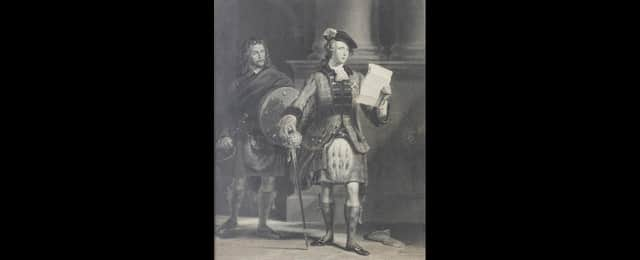New image of Bonnie Prince Charlie acquired for national collection


The engraving shows the Jacobite leader in a tartan coat with a sword reading a dispatch from Sir John Cope, the government commander during the 1745 rising.
Engraver John Horsburgh, of Edinburgh, likely made the piece to mark the Centenary of the 1745 rising.
Advertisement
Hide AdAdvertisement
Hide AdIt has been described as an ‘exciting’ addition to the collection given the sword and tartan coat are genuine historic items already held by the National Museum of Scotland.
The tartan coat was worn by Prince Charles Edward Stuart during the 1745 rising while his sword was one of several items removed from a luggage train following his defeat at the Battle of Culloden. It was later gifted to the Duke of Cumberland.
Horsburgh based his engraving on an earlier painting by Dundee-born artists William Simson.
Dr Rosie Waine, William Grant Foundation Research Fellow at National Museums Scotland said the piece reflected the growing romanticisation of the Jacobites in the 19th Century and would have been an in-demand piece at the time.
Dr Waine said: “During the early 19th Century, Jacobite history and objects had become heavily romanticised in popular culture.
“Jacobite themes were increasingly appearing in art and literature and what we tend to find is that artists such as Simson tended to include real historical objects in their work to lend them a sense of historical accuracy . We think that is what has happened here.”
The tartan coat was worn by Prince Charles Edward Stuart during the 1745 rising and was later held by the Drummonds of Hawthornden Castle near Lasswade in Midlothian.
The weapon ended up in the Royal Collection and emerged again in Scotland during George IV’s high-profile visit to Edinburgh in 1822, when the romanticisaiton of the Jacobites was at a high.
Advertisement
Hide AdAdvertisement
Hide AdDr Waine said William Simson likely had access to the objects through connections made with his clients.
She said: “The engraving itself would have been a popular item to purchase and there would have been a strong market for Jacobite commeorative material, particularly around the mid-19th Century.”
